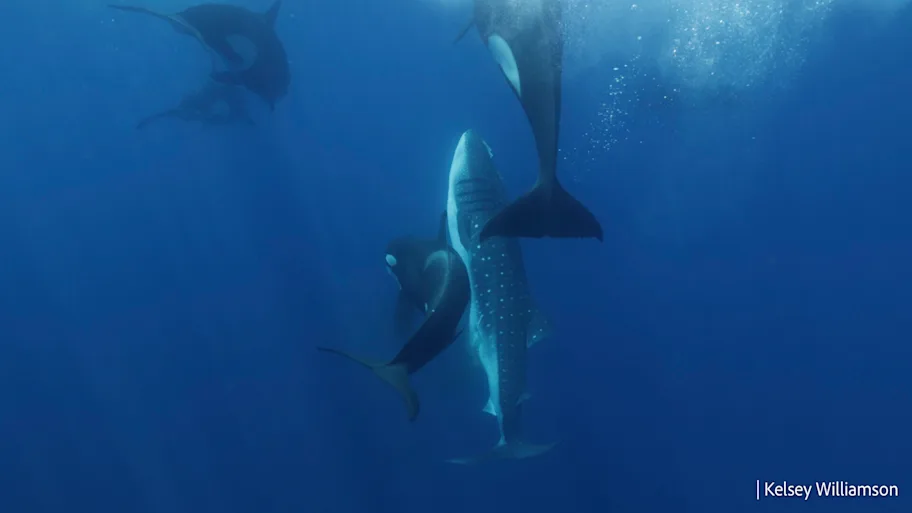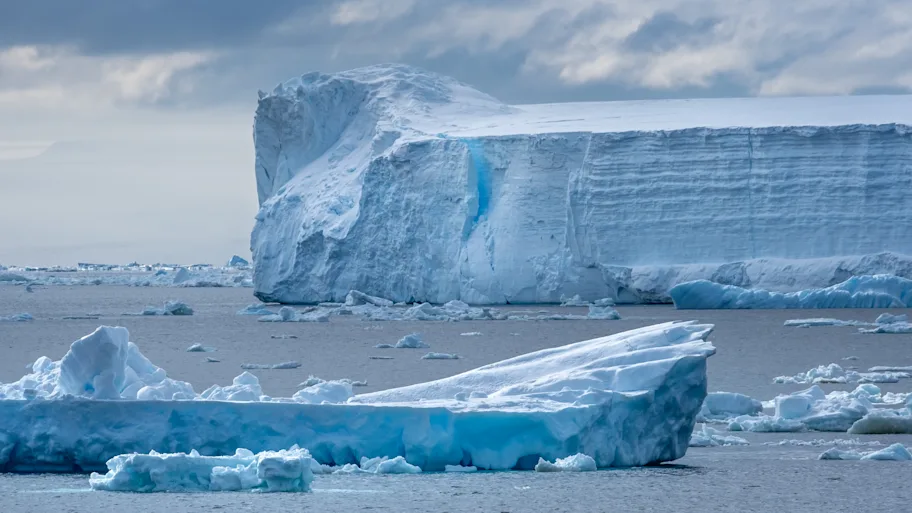
- Science News
- Featured news
- Scientists link a phytoplankton bloom to starving dolphins in Florida
Scientists link a phytoplankton bloom to starving dolphins in Florida

Scientists in Florida have linked shading from a major phytoplankton bloom in 2011 to the loss of key habitats in the Indian River Lagoon and changes in the prey available to bottlenose dolphins. By 2013, these changes caused widespread malnutrition and an unusual mortality event, where 77 dolphins stranded and died. Analyses of stable isotope ratios and the energy content of common prey showed that dolphins were eating fewer energy-rich ladyfish and more of the less nourishing sea bream. The scientists stress the importance of controlling discharges of nutrient-rich by-products of human activity like fertilizer or effluent, which feed intense, long-lasting phytoplankton blooms.
In 2013, 8% of the bottlenose dolphins living in Florida’s Indian River Lagoon died. Investigations have now revealed that the dolphins may have starved because key habitats for nutritious prey were destroyed by a phytoplankton bloom. This bloom was driven by the accumulation in the lagoon of fertilizer, effluent from septic tanks, and other by-products of human activity that are rich in nutrients like nitrogen and phosphorus.
“We linked mortality and malnutrition to a decreased intake of energy following a shift in dolphins’ diets,” said Dr Charles Jacoby of the Florida Flood Hub for Applied Research and Innovation, corresponding author of the article in Frontiers in Marine Science. “We linked the dietary shifts to changes in prey availability, and we connected changes in prey to system-wide reductions in the abundance of seagrass and drifting macroalgae. These reductions were driven by shading from an intense, extensive, and long-lasting bloom of phytoplankton.”
Signs of trouble
In 2013, scientists monitoring the Indian River Lagoon noticed that the dolphin population was struggling. 64% of the 337 dolphins they observed were underweight, 5% were emaciated, and 77 died: a toll classified as an unusual mortality event.
“An unusual mortality event is a stranding event that is unexpected and involves a significant die-off of any marine mammal,” explained Megan Stolen of the Blue World Research Institute, first author of the article. “The 2013 event was characterized by a marked increase in mortality and widespread evidence of malnourishment.”
Bottlenose dolphins are large, long-lived animals that eat relatively large amounts of many different types of prey, which means that any disruption to the local ecosystem can affect them. In this case, researchers suspected that critical changes were caused by a 2011 phytoplankton bloom that was fueled by nutrient-rich by-products of human activity flowing into, and accumulating in, the lagoon. The bloom shaded bottom-dwelling seagrass and macroalgae in large parts of the lagoon, killing off these key habitats for dolphins’ prey and potentially compromising the dolphins’ ability to hunt. But it’s difficult to prove what dolphins are eating: observations of dolphins feeding at the water’s surface don’t yield a full picture of their diets, and stranded dolphins often have empty stomachs.
Instead, the researchers focused on isotopic analysis of muscle biopsies collected from stranded dolphins between 1993 and 2013. The ratios of stable isotopes of carbon and nitrogen in muscle from dolphins represent a mixture of similar ratios in their prey, so — using reference values from prey species — the scientists could track dietary changes over time and compare them to contemporary fisheries monitoring and the presence of seagrass and macroalgae.
Read and download original article
Ripple effect
The scientists found a shift in the dolphins’ diets: during 2011-2013, they ate more sea bream and less ladyfish — a more energy-dense fish associated with seagrass. This agreed with the fisheries monitoring, which recorded changes in the availability of the two species: less ladyfish and more sea bream. It also matched the falling abundance of seagrass and macroalgae habitat over the same period. The shift from ladyfish to sea bream meant that dolphins would need to eat about 15% more prey to acquire the same amount of energy.
“In combination, the shift in diets and the widespread presence of malnourishment suggest that dolphins were struggling to catch enough prey of any type,” said Wendy Noke Durden of Hubbs-SeaWorld Research Institute, a co-author. “The loss of key structural habitats may have reduced overall foraging success by causing changes in the abundance and distribution of prey.”
The data also tallied with causes of death recorded for stranded dolphins. Between 2000 and 2020, malnutrition caused 17% of all recorded deaths, but in 2013, this figure rose to 61%.
“All studies have their limitations,” cautioned co-author Dr Graham Worthy of the University of Central Florida. “We did not have data on ratios of stable isotopes in all the prey that dolphins were eating from 1993 to 1999, so we could not fully explain the shift in diets observed from that early period to 2000–2010. Additionally, the link between malnourishment and a change in diet would have been enhanced by stable isotope data from the muscle of surviving dolphins.”
“Blooms of phytoplankton are part of productive ecological systems,” said Jacoby. “Detrimental effects arise when the quantities of nutrients entering a system fuel unusually intense, widespread, or long-lasting blooms. In most cases, people’s activities drive these excess loads. Managing our activities to keep nutrients at a safe level is key to preventing blooms that disrupt ecological systems.”

REPUBLISHING GUIDELINES: Open access and sharing research is part of Frontiers’ mission. Unless otherwise noted, you can republish articles posted in the Frontiers news site — as long as you include a link back to the original research. Selling the articles is not allowed.






